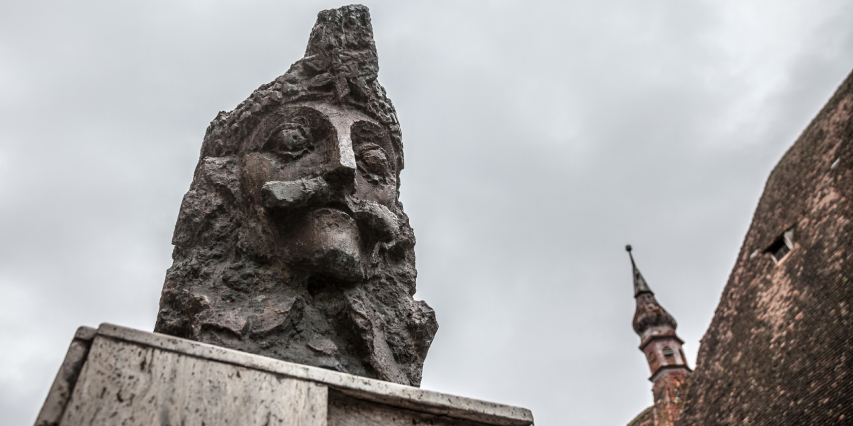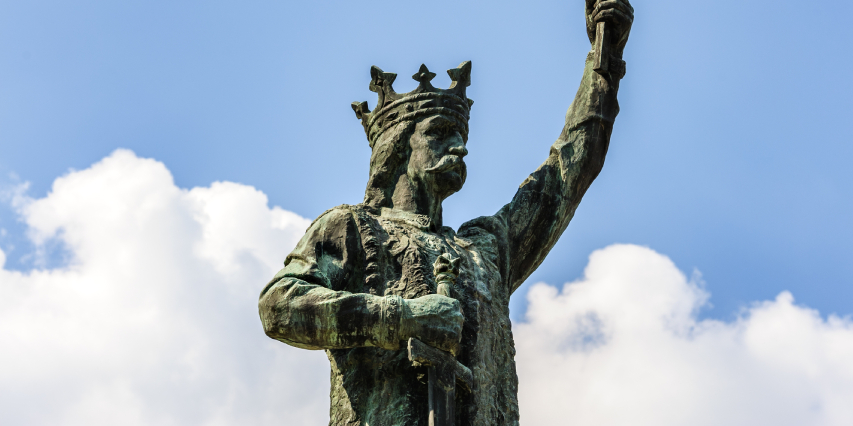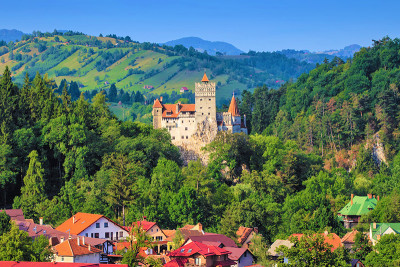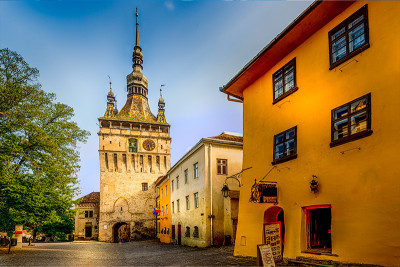Just as with any nation’s past, there are plenty of revered heroes and despised villains. Today, we are going to tell you about some of the heroes that have stood the test of time. The heroes whose history goes so far back that nothing can ever tarnish their reputation.
Fat-Frumos
Literally, Fat-Frumos means “Handsome Son.” Fat-Frumos is one of the most known characters of Romanian folklore and he is an idealistic hero who can only do good. He helps those who are in distress and he somehow always overcomes the villain of each story, even when all odds are against him.
One of the most popular stories involving Fat-Frumos is titled “Youth Without Age and Life Without Death.” You can read the long version here, but the short version is as follows: When Fat-Frumos was in the womb, on his birthday, he was crying and crying and refused to come into this world. His father spoke to him, promising all things good: kingdoms, princesses, wealth and more. Fat-Frumos refused these offers. Finally, his father said to him, “Be quiet, my son, and I will give you youth without age and life without death.” Fat-Frumos stopped crying at this, and was finally born into this world.
Fat-Frumos grew from a small baby into a toddler, then a child, and finally a young teenager. At 15 years old, he approached his father and asked for the endless youth that he was promised. His father looked at him and said that he could not grant youth. Upset, Fat-Frumos said that he would go to the ends of the earth to find the cure for aging. His parents begged him not to go, but he said that if he could not find the secret of youth, he would die trying.
Fat-Frumos traveled the world until finally he came across the palace of Youth Without Age and Life Without Death. He entered and was met by fairies. They told him that if he stayed, he would have eternal youth. He felt like he was in heaven, having achieved his life’s wish, living in a total paradise. But as the time flew by, he began to miss his parents and his home. He decided to leave the palace. The fairies begged him not to go, but off he went, riding home on his flying horse.
As Fat-Frumos flew home, he grew older and older by the second. When he finally arrived to the place of his birth, he found his home in ruins, crumbling and abandoned. He walked in, but there was not a sound. He went down the hallways, and into the room where he was brought to life, and he heard a cackling voice, “Welcome. I was hoping to see you soon. Had you been any later, I might have perished myself!” And at that, Death slapped Fat-Frumos to the ground and turned him to dust.
Mihai The Brave
Mihai the Brave (or anglicized as Michael the Brave) essentially created present-day Romania back in the 1500s. He was the first one in history to unite the three kingdoms: Moldavia, Transylvania, and Wallachia. Unfortunately, under his watch, the union only lasted 6 months as the nobles revolted and tore apart the union. Still, Mihai’s legacy has lasted as he saw the power in unity. Many compare him to King Arthur, who was able to unite the tribes of Britain.
Stefan The Great
Stefan the Great was in power as King of Moldavia from the late 1400s to early 1500s. He earned his title as the “Great” because of his fortitude against the Ottoman Empire. He fought himself, alongside his cousin Vlad the Impaler, in many battles. He was victorious in almost every battle against the Turks (a total of 44 victories out of 48 battles). He also earned the title of the “Great” because it was his efforts that prevents the Ottomans from expanding into the rest of Western Europe.
King Stefan was quite humble, pious, and religious. After every victory, he would fast on bread and water and thank the Lord for the win. He also built a total of 44 churches and monasteries to symbolize his 44 victories. After he died he was canonized as Saint Volvode Stefan the Great.
Vlad The Impaler

Vlad the Impaler might be an ominous name, but he truly was a hero still revered today by the Romanian people. Vlad the Impaler was Prince of Wallachia during the mid-1400s and was also known by the name Vlad III Dracula. Yes, Vlad is believed by some to be the inspiration of the story of Dracula, written in the 1800s by Irishman Bram Stoker. Even though the story of Dracula is also dark, the story really has nothing to do at all with Vlad.
Now, Vlad earned his nickname as the “Impaler” because he did gruesomely kill his enemies – this, however, is not the reason that he is admired. He is venerated because of his unwillingness to back down for his people.
In 1495, the Wallachians were threatened by the encroachment of the Ottoman Empire, who was led by the Hungarian King Matthias Corvinus. At this point, Wallachia had been declared part of the Ottoman Empire, so, to save his people, Vlad submitted. When the emissaries of the Ottoman Sultan Mehmed II arrived in Wallachia to collect their tribute, Vlad had all of their turbans nailed to their heads. When this worked, Vlad continued to think up cleaver ways to defeat the enemy.
Vlad’s armies were much smaller than the enemy’s, so he knew he could not win by brute force alone. Another time, Vlad and his men disguised themselves as Turkish cavalry and attacked Ottoman war camps in Bulgari – the Ottomans had no idea they were coming! There is so much more to Vlad’s story; he was imprisoned multiple times, but he never turned his back on Wallachia and never gave up.
He died in battle, paying the ultimate price for his people.
There you have it, four legendary heroes of Romania! We hope that these stories have inspired you to learn more about the history of Romania!

 ES
ES
 IT
IT
 DE
DE
 FR
FR


